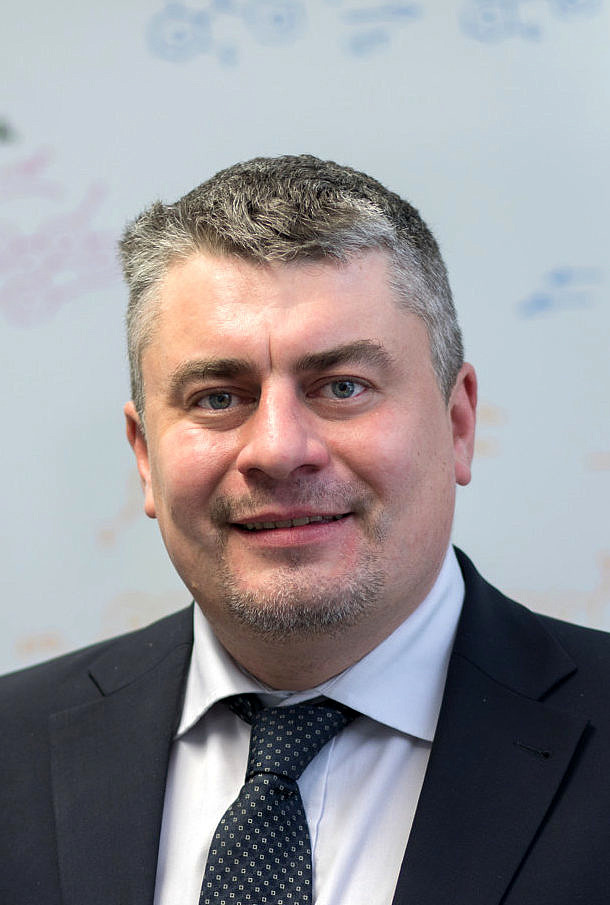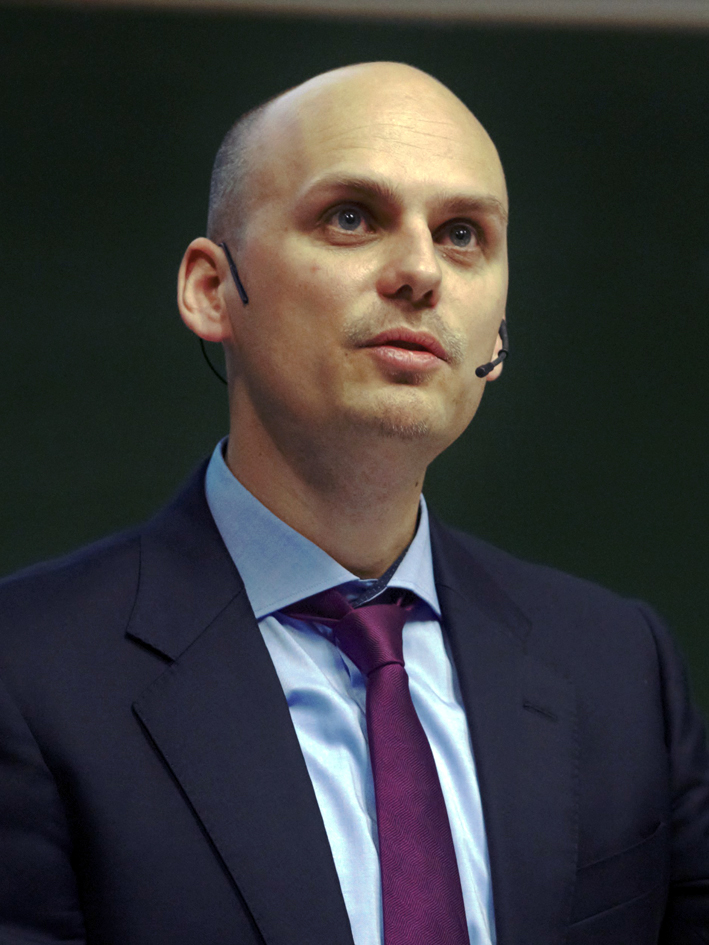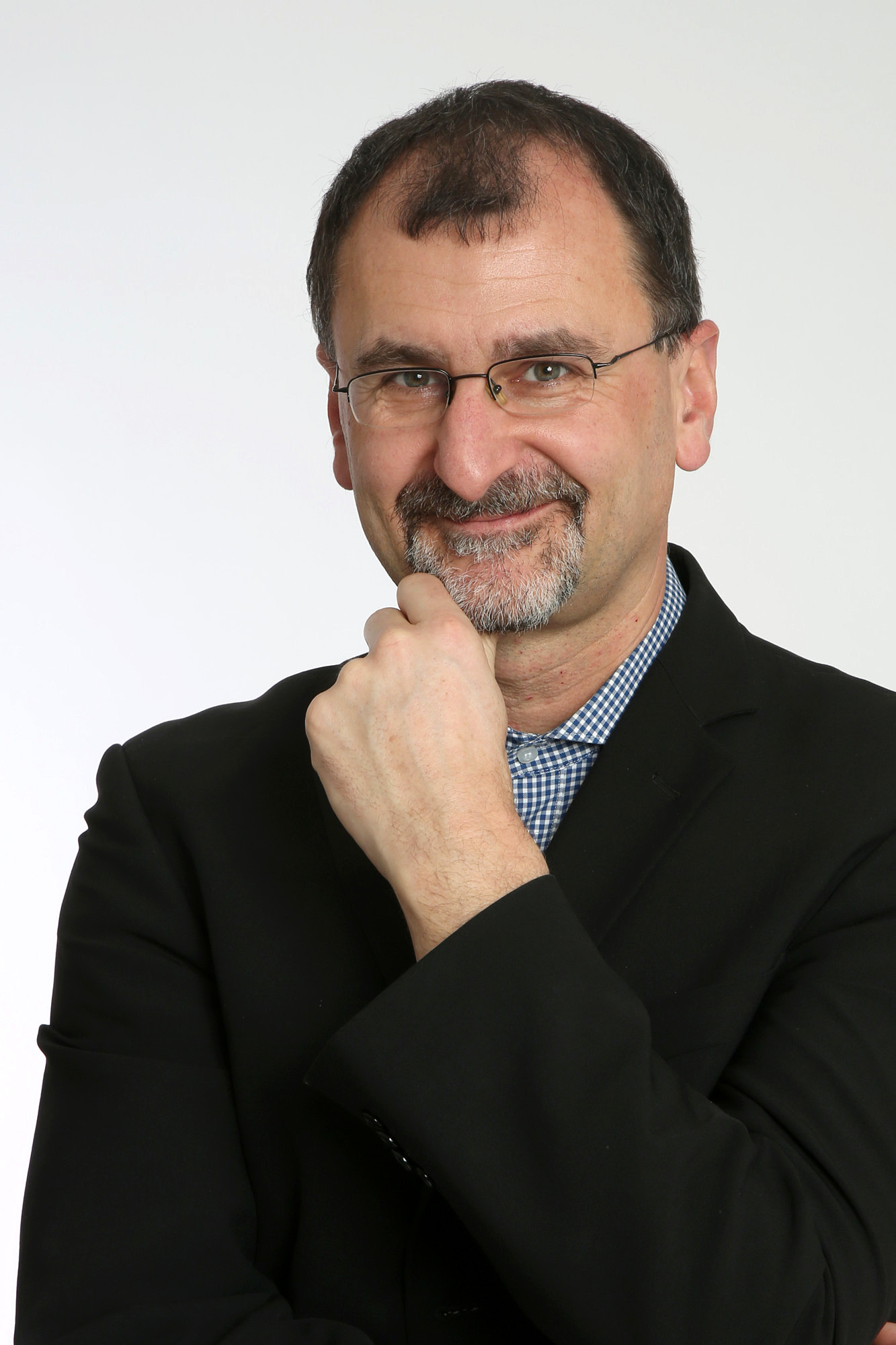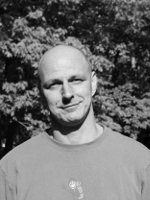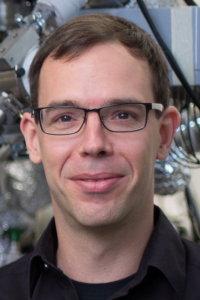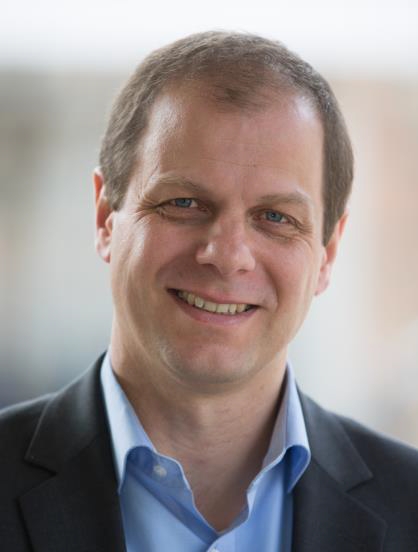Projects
A1 - Hirsch: Unifying Concepts for the Chemistry of Synthetic Carbon Allotropes
Principal Investigator
Prof. Dr. Andreas Hirsch
91058 Erlangen
- Phone number: +49 9131 85-65581
- Email: andreas.hirsch@fau.de
- Website: https://www.oc2.chemistry.nat.fau.eu
Project Focus
Project A1 is devoted to the development and basic understanding of the principles of synthetic carbon allotrope (SCA) chemistry. Fullerenes, single-walled carbon nanotubes, graphene, and nanographene models are providing the basis for our investigations. The systematic exploration of SCA reactivity is closely connected with the synthesis and quantitative characterization of both covalent and non-covalent SCA derivatives. In collaboration with project partners from all research areas of the SFB 953, our endeavor towards synthetic SCA chemistry will be supported by quantum-mechanical calculations and the investigation of structural and physical properties. In the first two funding periods, many fundamental results of covalent and non-covalent SCA chemistry were generated. Moreover, basic analytical tools have been introduced which allow, for the first time, a representative, efficient, and quantitative characterization of SCA derivatives. With this experience at hand, we will address in the third funding period a number of unprecedented challenges. With WP-1, we will take covalent SCA chemistry to the next level of complexity and functionality. We are now, for the first time, in the position to target the spatially controlled covalent patterning of SCA surfaces, and to create, via a “lego-like” approach, highly integrative 2D architectures with tunable high-performance functionality. These studies will include a) elucidating mechanisms and developing concepts for structured addend binding to graphene, b) generating structured 2D sheets, c) the development of new reactions for surface patterning of neutral graphene, and d) forming hierarchically structured and highly functional 2D sheets.
Furthermore, will extend our successful approaches towards supramolecular SCA chemistry for which we provided the basis in the first two funding periods. However, we will also go a significant step beyond and elaborate, for the first time, new concepts, in particular the development of a) synergistic π-π- and H-bonding interactions of bifunctional molecular wires with graphene, b) adaptive supramolecular interactions and chiral recognition between new polycyclic aromatic hydrocarbons (PAHs) and fullerenes or carbon nanotubes, c) depositing new PAHs on graphene, and d) the elaboration of the supramolecular chemistry with Hamilton-receptor functionalized SCAs.
In addition, our efforts are also devoted to the SFB 953 focal topic Inter-SCA-Architectures. We will follow two covalent and two non-covalent linking concepts employing suitable coupling components integrated into SCA precursor adducts. The covalent connection of different SCAs will be realized either by reductive diazonium coupling or by “click” reactions between SCA-azide- and SCA-alkyne precursors. For the non-covalent inter-SCA coupling, we will take advantage of the complementary Hamilton-receptor/cyanuric-acid binding motif and develop the synergistic supramolecular bridging of graphene with molecular wires containing a fullerene- (π-π-stacking) and an amidine- (H-bonding) terminus. The outlined approaches represent the first steps towards the development and the implementation of all-carbon-based technology components.
A2 - Jux: Graphyrins - Graphene-Porphyrin Hybrids
Principal Investigator
apl. Prof. Dr. Norbert Jux
91058 Erlangen
- Phone number: +49 9131 85-65583
- Email: norbert.jux@fau.de
- Website: http://www.jux.chemie.nat.fau.de/
Project Focus
Two major motifs, porphyrins and hexa-peri-hexabenzocoronenes (HBCs), will be used, alone and in combination, as molecular precursor platforms to construct graphene-like carbon networks, including graphyrins – graphene-porphyrin hybrids. Most members of this new family of compounds, the graphyrins, will form bowl-shaped structures because of the five-membered pyrrole rings. Interesting electronic properties, as well as supramolecular interactions, with, for example, fullerenes, or packing motifs, are expected. The embedded N atoms and the chemistry involved with them, i.e., coordination of metal ions, protonation, alkylation, cause modification of the electronic structure and may prevent π-π-stacking of carbon sheets. This approach can be regarded as controlled N-doping of graphene. Substituted HBCs, their precursors, and expanded systems – nanographenes (NGs), will be made and functionalized, yielding electronically, sterically, and conformationally modulated graphene models. Pyridine-like N-incorporation is planned here as well. Collaborations include photochemical and -physical studies, surface chemistry, mass spectrometry, theory, and device formation.
A3 - Peukert: Process Design Strategies for Advanced Carbon Allotropes and their In-Suspension Analytics
Principal Investigator
Prof. Dr.-Ing. Wolfgang Peukert
Cauerstraße 4
91058 Erlangen
- Phone number: +49 9131 85-29400
- Email: wolfgang.peukert@fau.de
- Website: http://www.lfg.uni-erlangen.de
Project Focus
We will focus on process design strategies for the solvothermal synthesis of highly fluorescent carbon dots (CDs) with enhanced optical properties on large scale. The solvothermal synthesis usually yields a mixture consisting of CDs, molecular fluorescent and non-fluorescent side products, and carbon nanoparticles without remarkable amount of fluorophores. Thus, only apparent values for the fluorescence quantum yield of the synthesis products are accessible due to obscuration of the true fluorescence properties of CDs by side products, which can act as quenchers. Efficient separation of the CDs from the mixture is required to get access to the true optoelectronic properties of the CDs and to obtain reliable information regarding their structure by spectroscopic methods. In preliminary experiments we demonstrated the large potential of liquid chromatography for the separation of CDs. We will design a HPLC process for baseline separation of the different components of the products from solvothermal syntheses by tailoring the interactions of the CDs with the stationary and the mobile phases. The CDs purified by HPLC will be size-selected and their structure will be carefully characterized, e.g., by a unique combination of Electrospray-Differential Mobility Analysis-Mass Spectrometry. For the characterization of the purified CDs and of carbon allotropes produced by project partners within SFB 953 regarding size, shape, defects as well as functional groups, our already strong toolbox will be further expanded by establishing an Analytical Ultracentrifuge (AUC) with fluorescence/Raman-spectroscopic detector additionally to the already well-proven AUC device with UV-Vis/NIR detector. The photoelectric properties of the purified CDs and device fabrication will be studied in cooperation with project partners in the SFB 953 in order to explore their potential for applications in solar cells, luminescence devices or in catalysis. The scale-up of the hydrothermal synthesis of CDs will be studied in detail.
A4 - Tykwinski: Organic Synthesis, Carbon-Rich Structures, Carbon Allotropes
Principal Investigator
About
Prof. Dr. Rik Tykwinskireceived a call from the University of Alberta in 2016.
A5 - Kivala: Molecular Fragments of Heteroatom-Doped Carbon Allotropes by Chemical Synthesis
Principal Investigator
Milan Kivala
69120 Heidelberg
- Phone number: +4962215419823
- Email: milan.kivala@oci.uni-heidelberg.de
- Website: https://www.uni-heidelberg.de/fakultaeten/chemgeo/oci/akkivala/index.html
Institute of Organic Chemistry University of Heidelberg
In 2018 Prof. Milan Kivala received a call from the University of Heidelberg.
Project Focus
The project will pursue the synthesis and investigation of polycyclic aromatic hydrocarbons (PAHs) with heteroatoms embedded within their sp<sup<2-carbon scaffolds. Such compounds can be regarded as defined molecular fragments of heteroatom-doped graphene and related carbon allotropes, which renders them interesting objects for fundamental experimental and theoretical studies. It is a fact that various production protocols inevitably introduce structural defects such as non-benzenoid rings into the sp2-carbon framework of graphene that pronouncedly influence its properties. In this context, PAHs comprising non-benzenoid rings represent valuable models to understand the impact of such structural imperfections. While purely carbonaceous PAHs in which the presence of rings smaller and/or larger than benzene resulted in severe distortion from planarity and altered properties have been reported, scaffolds combining heteroatom doping with the incorporation of non-benzenoid rings remain scarce. Hence, in the next funding period we aim to further increase the structural and electronic complexity of our heteroatom-doped PAHs by embedding non-benzenoid moieties into their scaffolds. We expect to achieve distorted molecular structures representing structurally defect segments of heteroatom-doped carbon allotropes on one hand and innovative organic materials with unusual properties on the other. The target structures with a high degree of control over the size, shape, and edge structure will become accessible through newly developed synthetic routes starting from carefully designed building blocks. Key synthetic steps involve carbonyl olefinations and diverse transformations of reactive acetylenic moieties that are followed by various cyclization protocols carried out either in solution, on surfaces, or in the gas phase. The resulting com-pounds will be subjected to interdisciplinary studies to unravel the impact of heteroatom doping in combination with structural defects on the electronic, photophysical, and materials features. Through this approach we will be not only able to generate fundamental understanding in the area of heteroatom-doped carbon allotropes, but will also identify the most promising candidates for application as organic functional materials.
A6 - Amsharov: Atomically Precise Synthesis of Carbon Nanotubes and Related Structures
Principal Investigator
Konstantin Amsharov
06120 Halle
- Phone number: +493455525603
- Email: konstantin.amsharov@chemie.uni-halle.de
Institut für Chemie Organische Chemie Martin-Luther-Universität Halle-Wittenberg
In 2019 Prof. Konstantin Amsharov received a call from the University of Halle-Wittenberg.
Project Focus
Single-Walled Carbon Nanotubes (SWCNTs) representing an extended family of quasi one-dimensional nanostructures with tubular shape, have been widely touted for their superior electronic properties and high potential to fulfil dreams in the realm of nanotechnology. However, the promising applications and the exploration of the full potential of these fascinating materials are impeded by the limited availability of uniform chirality-pure samples. The successful tackling of this challenge is expected to revolutionize the science of carbon-based nanomaterials. Among various sophisticated approaches suggested for chirality-controlled synthesis of SWCNT, the use of molecular templates, which unambiguously dictate the chirality of the SWCNTs during the growth, holds the biggest potential. We were able to achieve this long-awaited breakthrough and for the first time have demonstrated the chirality-controlled synthesis of SWCNTs by epitaxial elongation of well-defined molecular seeds. The approach opens a venue towards rational synthesis of SWCNTs of virtually any possible chirality as soon as the required precursor molecules are available.
During the last funding period we have developed a general strategy for the synthesis of molecular CNT-seeds for controlled growth of SWCNTs of virtually any desired chirality by combinatorial multi-segmental assembly. Our approach allows facile assembling of complex SWCNT precursors (with up to 100 carbon atoms in a strictly predefined positions). The feasibility of the approach was demonstrated on the synthesis of precursor molecules for 21 different SWCNT chiralities. Furthermore, we have extended the strategy toward the rational synthesis of functional SWCNTs and related structures (nanocones, fullerenes) using functional molecular seeds. Several functional precursors bearing a porphyrin moiety were prepared and investigated for the growing of tubes and nanocones. Our preliminary STM results demonstrate the feasibility of the approach for the rational fabrication of functional nanostructures.
The main goal of A6 project is to create and establish a reliable synthetic pathway for the preparative fabrication of isomerically pure SWCNT and related carbon based nanostructures. The project is subdivided into three work packages.
WP-1: Within the framework of WP-1 it is intended to investigate already available precursors for the controlled SWCNT growth on Pt-group metal surfaces under STM conditions (Chemistry on Surfaces). The most promising precursors will be prepared in high enough amounts to enable the subsequent CVD experiments. The adaptation of STM conditions to typical CVD production protocols will include the improvement of the deposition methods, replacing the ultra-clean monocrystalline surfaces with metal nanoparticles or easy to prepare metal films, and applying ambient pressure instead of the low efficient high vacuum conditions. Depending on the results the molecular seeds will be further optimized in order to improve the efficiency and selectivity of the controlled SWCNTs synthesis.
WP-2: Owing to our success in the on-surface fabrication of functional SWCNT-related nanostructures, we plan to continue this topic which would be a subject of the focal topic Chemistry on Surfaces. In this package a synthesis of porphyrin based precursor molecules is planned to be developed. The transformation of the respective precursors to the functional ultra-short SWCNTs and the following epitaxial elongation on Pt-surface will be investigated.
WP-3: Our progress in the synthesis of complex halogenated polycyclic aromatic hydrocarbons (PAHs) and the expertise in the on-surface C-C bond formation allows us to extend our approach to the fabrication of SWCNT-related carbon-based nanostructures on less active surfaces. The investigations within WP-3-A will be focused on the development of alternative on-surface synthetic approaches to structurally related non-planar carbon-based nanostructures using Au, Ag, Cu as well as metal-oxide surfaces. Two additional subprojects WP-3-B and WP-3-C are oriented towards the synthesis of carbon-based nanostructures exploiting new techniques, which we developed very recently. This includes the synthesis of molecular tweezers, fullerene catchers (WP-3-B), and the synthesis of pristine zig-zag nanographenes (WP-3-3).
A7 - von Delius: Mechanically Interlocked Synthetic Carbon Allotropes
Principal Investigator
Prof. Dr. Max von Delius
89081 Ulm
Germany
- Phone number: +497315022847
- Email: max.vondelius@uni-ulm.de
Institute of Organic Chemistry University of Ulm
In 2016 Prof. Max von Delius received a call from the University of Ulm.
Project Focus
The effective non-covalent recognition of Synthetic Carbon Allotropes (SCAs) poses a considerable challenge to the supramolecular chemist, because these organic materials are partially polydisperse, lack heteroatoms, and are inherently apolar or curved. In this project, we will develop innovative concepts and compounds for the supramolecular recognition of fullerenes (WP-1), single-walled carbon nanotubes (SWCNTs, WP-2) and graphene edges (WP-3).
In WP-1 we will synthesize curved macrocycles with extremely high affinity for fullerenes and explore the potential of these compounds as p-type organic semiconductors in organic solar cells and as supramolecular directing groups in multiple fullerene addition reactions. Building on the discovery of a spectacular porphyrinylene/phenylene nanohoop during the second funding period of the SFB 953, we will prepare second generation variants of this macrocycle with the realistic aim of obtaining macrocycles with world-record affinity and selectivity for C60. We will also synthesize highly strained nanohoops containing electron-donor motives such as S,N-heteroacenes, which we expect to have unique solubility and optoelectronic properties. All nanohoops will be investigated for the regioselective preparation of technologically important fullerenes such as PC70BM.
In WP-2 we will prepare unusual mechanically interlocked materials, in which discrete macrocycles are wrapped around SWCNTs, thus providing a “best-of-both worlds” (typically: covalent vs. non-covalent) scenario for the functionalization of SWCNTs. The first approach for achieving this goal will be based on dynamic covalent disulfide exchange for the crucial ring-closing reaction. Having obtained proof-of-principle data for the feasibility of this functionalization method during the second funding period, we now seek to investigate the size selectivity of the underlying supramolecular recognition and extend the methodology to aqueous medium. The second approach will be based on stable, shape-persistent macrocycles that due to their “open-mouthed” shape should be able to thread onto the caps of SWCNTs.
In WP-3 we will address the tantalizing prospect of using graphene edge defects to construct and investigate unprecedented single-molecule wires. We propose to prepare linear bisamidine compounds to be inserted by self-assembly into the graphene nanojunctions. The key premise of this work package is that the edges of graphene sheets are known to bear oxidized “defects” such as carboxylic acids rather than hydrogen atoms. The proposed amidine compounds are designed such that they will form strong “charge-assisted hydrogen bonds” with carboxylic acid residues on each side of the graphene nanojunction. This self-assembly approach is suitable to dramatically increase the yield in the preparation of such single-molecule devices and allow us to infer valuable insights on the chemical structure of graphene edge defects.
A9 - Pérez-Ojeda: Caging Carbon: Intercalation of Nano-onions and Supramolecular Encapsulation of SCAs
Principal Investigator
Dr. Maria Eugenia Pérez-Ojeda Rodriguez
91058 Erlangen
- Phone number: +49 9131 85-65646
- Email: eugenia.perez-ojeda@fau.de
- Website: https://www.chemistry.nat.fau.eu/perez-group/
Project Focus
Carbon cages comprise a class of nanoarchitectures possessing hollow interiors which is of great interest in fundamental supramolecular chemistry (endohedral guest binding) and might also find applications such as catalyst support, batteries, and drug delivery systems. A9 focuses on representative prototypes of cages regarding the wall architecture, namely, closed cages and porous networks with an accessible cavity. We target the reductive functionalization of carbon nano-onions (CNOs) or multilayered arrangements of closed fullerene shells with a matryoshka-like structure and the synthesis of carbon-rich void cages such as cyclophanes and molecular cages for selective carbon allotrope recognition. We plan to elucidate for the first time the alkali metal intercalation chemistry of CNOs. They can be prepared with controlled defect densities. Therefore, we will disentangle the Role of Defects in the intercalation process. Systematic variation of the alkali metals and doping stoichiometries will be carried out. Transport, magnetic properties, and doping-induced electronic modifications of K-doped CNOs will be studied. Moreover, the corresponding reductive activation of CNOs will be applied for the covalent binding to other carbon allotropes to prepare Inter-SCA-Architectures and to introduce chromophores of interest for other research projects within this SFB.
Cyclophanes and nanocages are fascinating architectures which permit the encapsulation of interesting guest molecules and metallic clusters which are attractive for molecular recognition, catalysis, and sensing. More importantly, they will serve as probes for electronic interactions in confined space which are crucial for photovoltaics and organic electronics. The voids properties and, therefore, the binding sites for carbon allotropes recognition, will be based on different polycyclic aromatic hydrocarbons (PAHs). Through modification of their donor/acceptor character, their topology (convex/concave π-π-interaction) and hydrophobicity, the cavity size and nature will be tuned to favor the binding with various guest molecules. The molecular design permits to employ different linkers and cage vertices. Flexible alkyl-malonate linkers, which will further allow the post-functionalization with electron acceptor fullerenes surrounding the cage, are planned. Also switchable linkers leading to tunable cavity sizes are to be probed. Furthermore, the supramolecular behavior will be explored in terms of self-assembly towards porous 2D networks (Chemistry on Surfaces) and in terms of host-guest chemistry. Encapsulation of electron donor molecules and fullerenes as electron acceptors, carbon nanotubes (CNT), and also endohedral fullerenes with different redox and magnetic properties will be studied. These supramolecular complexes will be systematically investigated, including photophysical studies in collaboration with analytical and physicist groups.
B1 - Brabec: Controlling the Optoelectronic Properties of Semiconducting Carbon Allotrope Heterojunctions by the Design of Nanoparticle Composites
Principal Investigator
Prof. Dr. Christoph J. Brabec
91058 Erlangen
- Phone number: +49 9131 85-25426
- Mobile phone: 01717557762
- Email: christoph.brabec@fau.de
- Website: http://www.i-meet.ww.fau.de/
Project Focus
This research proposal aims to design, implement and investigate novel concepts to overcome essential limitations of carbon allotrope (CA) heterojunction composites and devices. The first and second funding periods were dedicated to explore the process – microstructure – macroscopic property relations of bulk heterojunction (BHJ) composites and generated novel insight into the mechanisms governing microstructure formation. Major efforts were undertaken to develop an ab initio method allowing to determine the miscibility and microstructure of bulk heterojunction components. Combining DFT calculations with computational artificial intelligence routines enabled us to qualitatively predict thermodynamic equilibrium microstructures of CA BHJ composites. Such fundamental insight into molecular processes governing microstructure formation opens the opportunity for a knowledge-based development of tailored strategies to overcome these major challenges. For instance, the precise knowledge of the single components solubility supported the identification of novel additive-based processing methods for CA composites, which was experimentally confirmed by in situ characterization techniques. Fullerenes with optimized miscibility were designed by side chain engineering following theoretical predictions and allowed to gain better microstructure control by mixing materials with mutual solubility and miscibility. The significantly improved control over microstructure formation enabled us to study the impact of well-defined microstructures on macroscopic CA BHJ properties, as for instance their thermodynamic stability in thin films or their tendency of forming charge transfer (CT) complexes.
The later property is of outstanding interest for solar cell applications, as CT states reduce the radiative recombination, resulting in lowered open circuit voltages (VOC). One of our carbon nanotube:fullerene all-carbon heterojunction composites was indeed found to reveal exceptionally low VOC losses that could be related to the absence of CT states in these systems. This exceptional behavior was further observed in polymer:small molecule systems with a novel non-fullerene acceptor and opened the opportunity to develop a deep scientific understanding for designing highly efficient CA solar cell composites without CT states.
The enhanced understanding and the control of microstructure formation further allowed to develop a much more detailed knowledge on the morphological instabilities in bulk heterojunction systems. A figure of merit (FoM) was introduced, utilizing advanced solubility calculations, which is able to guide the design of morphologically stable solar cells with no or strongly reduced burn-in degradation.
The current understanding in CA BHJ composites suggests that higher crystallinity and better domain purity are beneficial for device performance. Our overarching objective within the SFB 953, learning how to control micro-structure formation in CA BHJ composites, thus can be translated into the task to reduce the mixed amorphous regimes while in parallel increasing the defect free crystalline regimes. Traditional solution processing always starts with an unordered mixed phase in the ink, and is therefore challenged to form ordered domains during drying. In the third funding period, we propose a completely different concept for reducing the mixed amorphous domains while increasing the crystalline ones: the synthesis of pristine organic semiconducting nanopar-ticles (NPs) with a size distribution as required for an optimized BHJ composite. The synthesis of organic NPs in aqueous dispersions has been reported previously, but only recently, at the end of the second funding period, we have been able to demonstrate how to reveal the full potential of organic BHJ particles for overcoming solubility, miscibility, and architectural limitations. Within the third funding period, we will thus focus on advanced nanoparticle CA heterojunction concepts with electronically active surfactants as enabling strategy to allow for an efficient charge transport or charge separation at the interface between fullerenes and other organic semi-conductor nanoparticles forming binary and ternary composites. The NP BHJ concept will allow us to further study the underlying mechanisms of microstructure architectures on thermal- or photo-degradation for various length scales by blending nanoparticles with various compositions and dimensions. This level of microstructure control will finally allow clarifying the impact of CA BHJ interface dimensionality on the formation of charge transfer states.
B3 - Halik: Morphology and Property Control of SCAs via Self-Assembly
Principal Investigator
Prof. Dr. rer. nat. Marcus Halik
91058 Erlangen
- Phone number: +49 9131 85-70367
- Email: marcus.halik@fau.de
- Website: http://www.omd.uni-erlangen.de
Project Focus
In the second funding period we have investigated methods to assemble functionalized SCAs into device structures. We have focused on covalent and non-covalent assembly methods and we have successfully demon-strated functional devices (mainly field-effect transistors, memory transistors, capacitors, and solar cells). Moreover, we have developed an excellent understanding of transport in theory related to experiments. These results have been published in joint publications with 9 different PIs of the SFB 953.
In B3 ‘Morphology and Property Control of SCAs via Self-Assembly’ we will generate new 2D-carbon assem-blies controlled by π-π-interaction in order to generate efficient transport in self-assembled monolayer devices. By using bottom-up and top-down concepts (Chemistry on Surfaces) we will arrange nanographene towards non-covalent stacked 2D-lattices and we will integrate them in self-assembled monolayer field-effect transistors (SAMFETs). As second task, we will develop efficient supramolecular assembly tool-kits to generate intercarbon- and hybrid assemblies (Inter-SCA-Architectures) with unique properties in transport, morphology, and optical properties. Therefore, we will use molecular tweezers and C60-derivatives and controlled van-der-Waals forces as driving force for assembly.
B4 - Maier: High Resolution Scanning Probe Microscopy / Spectroscopy of Functionalized Carbon Allotropes
Principal Investigator
Prof. Dr. Sabine Maier
91058 Erlangen
- Phone number: +49 9131 85-27268
- Email: sabine.maier@fau.de
- Website: https://www.spm.nat.fau.de/
Project Focus
Project B4 is devoted to the self-assembly and surface-assisted synthesis of novel carbon materials on metal surfaces and the characterization of their structural and electronic properties at the atomic-scale using high-resolution scanning probe microscopy. In the past funding period, we focused on the synthesis of graphyne-like (sp sp2) and graphene-like (sp2) one- and two-dimensional carbon-based nanostructures as well as nanocones from rationally designed molecular precursors. In particular, we demonstrated the defect-free fabrication of supramolecular and covalently-linked porous carbon nanostructures, including macrocycles, nanoribbons, and 2D networks. We developed various approaches to improve the structural control in on-surface synthesis experiments of porous carbon materials, such as using hierarchical synthesis procedures or self-assemblies as templates. In addition, we successfully unraveled novel surface-catalyzed reaction schemes for the bottom-up fabrication of carbon materials and determined the band gap of covalently-linked and organometallic two-dimensional networks to quantify their electronic structure.
In the third funding period, we will continue in this direction to gain further insights into the self-assembly and surface-assisted synthesis of novel carbon materials on metal surfaces. High-resolution scanning probe microscopy and spectroscopy experiments will provide fundamental insights into the structural and electronic properties at the atomic scale. In particular, we will increase the structural complexity of the carbon materials by investigating larger π-systems that include 4-,5-,7-, or 8-membered rings or heteroatoms as well as non-planar systems. The goal is to fabricate new atomically precise carbon materials through structural design of the precursors and preprogrammed reaction schemes. The carbon nanostructures will be tailored towards desired electronic properties, such as structures with tunable band gap.
B5 - Müller/Koval: Production Processes and Physical Properties of Carbon Allotropes
Principal Investigator
Prof. Dr. Paul Müller, Dr. Yuri Koval
About
Prof. Dr. Paul Müller reitred in 2015.
B6 - Seyller: Electronic Structure and Many-Body Effects in Doped Graphene
Principal Investigator
Prof. Dr. Thomas Seyller
Affiliation: Technische Universität Chemnitz, Institut für Physik, Reichenhainer Straße 70, 09126 Chemnitz, Tel.: +49 (0) 371 531-21770
Link: https://www.tu-chemnitz.de/physik/TEPH/
About
Prof. Dr. Thomas Seyller received a call from the University of Chemnitz in 2012.
B7 - Steinrück/Papp: Tuning the Surface Chemical Properties of Graphene
Principal Investigators
Univ.-Prof. Dr. Hans-Peter Steinrück
91058 Erlangen
- Phone number: +49 9131 85-27343
- Email: hans-peter.steinrueck@fau.de
- Website: https://www.chemie.nat.fau.de/ak-steinrueck/
PD Dr. Christian Papp
91058 Erlangen
- Phone number: 0913185-27326-67506-27315
- Email: christian.papp@fau.de
- Website: https://chemistry.nat.fau.eu/papp-group/
Project Focus
In the second funding period, we gained extensive knowledge about the chemistry of metal-supported graphene and its analogue hexagonal boron nitride (h-BN). We thereby successfully contributed to the focal topic Chemistry on Surfaces. The results range from novel insights into the growth of 2D materials, their intercalation and chemical/covalent functionalization, on the preparation and the chemistry of nanoclusters grown on Moiré-patterned graphene on Rh(111), and on the in situ formation of molecular networks on graphene.
In the third funding period, we will continue our research towards the chemical functionalization of graphene and the chemistry on and below graphene. We will introduce further innovative routes towards the functionalization with small molecules, with a particular focus on a spatially defined chemistry on patterned graphene, addressing only specific regions of the 2D material. Thereby, the covalent chemistry on, but also underneath graphene, will be in the center of attention; this includes intercalation and reaction studies in the confined space between graphene and the substrate at gas pressures up to 1 mbar. One strong focus will be the surface chemistry of metal clusters on graphene and its analogues, using Moiré-patterned graphene. Hereby, we will use graphene as a template for cluster formation. These studies will be extended to new metal-alloy clusters and the possibility to use graphene as a separating membrane for dealloying metals. We will also address the formation of carbon-rich covalent networks as a route to new synthetic carbon allotropes, and the patterning and formation of new large carbon allotropes, e.g., from porphyrinoid precursor molecules or graphene oxide.
B8 - Weber: Graphene and Organic Molecules: Transport Experiments
Principal Investigator
Prof. Dr. Heiko B. Weber
91058 Erlangen
- Phone number: +49 9131 85-28421
- Email: heiko.weber@fau.de
- Website: https://www.lap.physik.nat.fau.de/
Project Focus
In the second funding period, our research was performed along three major strands: (a) The physics associated to extended defects, which intersect the graphene plane and provide a model system for what we baptized a mosaic-like conductor. (b) Electron tunneling across graphene nanoelectrodes, with and without molecular bridges, and its interaction with light fields. (c) The physics of (photo-) excited electrons, and tailor-made graphene-based devices for their investigations. For all three topics, the unique properties of SCA materials were key to success, but as it turns out the results uncover very interesting and remarkably general physics that has significant importance beyond this particular material system.
Supported by the experience gained, we will partially refocus our research and put predominant emphasis on the investigation of charge transport through single-molecules, which we will contact using graphene nanojunctions in three work packages. This system provides an unprecedented opportunity to carry out next-level experiments on single-molecule junctions, and to overcome long-standing experimental limitations that were inherent to metal electrode pairs. Future experiments should be able to provide single-molecule junctions with parametric control of vibronic excitations, electronic excitations, bias voltages applied as DC but also at ultrafast electric fields, thermal gradients, gate fields etc., ideally on the very same junction. We will use two types of junctions: ultraflat, ultrastable, and transparent graphene nanojunctions (GNJs), and tunable-distance coplanar SiC junc-tions (cSiCJ) with graphene or gold nanoelectrodes that are ideally suited for thermoelectric measurements. Our bottleneck is currently the reliable formation of stable junctions, a problem that we will tackle with a systematic approach benefitting from the rich and excellently adapted molecular toolbox within the SFB 953.
Using ultraflat GNJs, we will explore optical access to single molecules. We will establish single-molecule junctions with fluorescent molecules. Fluorescent processes will be excited either optically or electrically. The measurement will simultaneously record emitted photons and electrical characteristics. The rich data set we expect will allow unprecedented access to electronic phenomena in a single molecule in electric and optical nonequilibrium. Optical access will also be used to study mode-selective vibrational excitation of molecules during the transport measurements (in absence of electronic excitation). This will allow disentangling electronic and vibron-ic contributions to charge transport, a topic that has been very successfully initiated in the first funding period.
Having developed the novel cSiCJ devices, we will explore thermovoltage as an additional quantity. The setup provides atomically thin contacts with nearly ideal thermal and electrical reservoirs. The setup is able to form gold-molecule-gold contacts (according to first experiments, graphene-molecule-graphene contacts are most probably possible, but have not yet been reconfirmed). It provides remarkable stability such that we will be able to measure correlations between electrical and thermoelectrical characteristics. As the junction is almost fully transparent, it is possible to combine it with optical stimulation/detection as well.
Furthermore, we will design and fabricate devices based on epitaxial graphene. Epitaxial graphene consists of graphene and SiC, two of the strongest materials we know, both being transparent. We will design and fabricate a novel type of on-chip electron gun, in which graphene provides the electron source and SiC provides the robust electronic platform. The aim is a competitive technology that can serve as point-like electron source for electron microscopy, or as an on-chip X-ray source. After two years, we will evaluate our research progress. If the concept permits technological competitiveness, we will pursue a more comprehensive development strategy and spin off the project from SFB 953. Further, we will continue to design and fabricate devices for light-matter interaction on ultrafast timescales. In particular, application of ultrafast light pulses to graphene nanojunctions and epitaxial graphene Schottky contacts permit unprecedented experiments and very fundamental insight in light-matter interaction.
B9 - Zaumseil: Photo- and Electroluminescence of Carbon Allotropes
Principal Investigator
Prof. Dr. Jana Zaumseil
Affiliation: Applied Physical Chemistry, Im Neuenheimer Feld 253, 69120 Heidelberg, Tel.: +49 (0) 6221-54 5065
Link: http://www.pci.uni-heidelberg.de/apc/staff/zaumseil_cv.html
About
Prof. Dr. Jana Zaumseil received a call from the University of Heidelberg in 2014.
B10 - Guldi: Photophysical Characterization of Synthetic Carbon-Allotrope-Based Materials
Principal Investigator
Prof. Dr. Dirk M. Guldi
91058 Erlangen
- Phone number: +49 9131 85-27340
- Email: dirk.guldi@fau.de
- Website: http://www.chemie.fau.de/guldi
Project Focus
The role of carbon-based nanomaterials in charge transfer systems is gaining significance, since the possibilities to tune their electronic and structural properties are sheer unlimited. In terms of sustainability, carbon nanostructures will continue to contribute towards future energy supply, as they are readily obtained from natural products. The scope of this work on Synthetic Carbon Allotrope (SCA)-based materials is threefold in nature:
Firstly, investigating aspects of photon- and chargemanagement in Inter-SCA-Architectures in solution and in the form of well-ordered architectures with relevance to optoelectronic device efficiencies and their optimization; secondly, employing Inter-SCA-Architectures to probe advanced challenges in the area of charge transfer; thirdly, interrogating structure and properties of Inter-SCA-Architectures to enable fine-tuning their electronic properties.
B11 - Hommelhoff: Light-Field-Driven Currents in Graphene and Synthetic Carbon Allotropes as Functional Electron Optical Elements
Principal Investigator
Prof. Dr. Peter Hommelhoff
91058 Erlangen
- Phone number: +49 9131 85-27090
- Email: peter.hommelhoff@physik.uni-erlangen.de
- Website: https://laserphysik.nat.fau.de/
Project Focus
B11 aims at gaining deep insights into controlling electrons coherently inside of graphene and in graphene-based nanojunctions based on strong-field interactions with phase-controlled few-cycle laser pulses (WP-1). Furthermore, in WP-2, B11 will investigate carbon nanotubes and functionalized versions of them with low-energy electron imaging, both statically and dynamically, and will explore diamond and diamondoid-covered metal needle tips towards their electron source properties.
WP-1 is based on our breakthrough results in the current funding period, where we could demonstrate strong-field physics inside of a conductor, namely in graphene, for the first time. Intriguingly, intraband motion and interband transitions are intricately coupled, resulting in Landau-Zener-Stückelberg interferometry. We could thus demonstrate fully coherent electron dynamics inside of graphene. For the upcoming funding period we propose to explore more complex electron matter wave control inside of graphene. We will do so with the help of specially shaped laser pulses, with phase-controlled few-cycle pulses with longer optical period and with higher optical field strengths. This will allow us to understand electronic decoherence on (sub-) femtosecond time scales in detail. We will also explore (twisted) bilayer graphene and graphene nanojunctions with and without bridging molecules.
In WP-2, we will continue our work on free-space electron matter wave control. In the current funding period, we could show that femtosecond laser-triggered electrons from a metal needle tip are spatially highly coherent. This was based on a carbon nanotube electron matter wave beamsplitter. We propose to now turn the perspective around and use the coherent electrons to image CNTs and their functionalizations. We expect to be able to image this with (sub-) nanometer resolution, and potentially even with time resolution based on laser-triggered electrons. In this work package, we will also investigate the suitability of diamondoid-covered metal needle tips as electron sources. Similar to crystalline nanodiamond-covered needle tips, whose supreme electron source properties we could show very recently, we can expect even better source behavior because of the smallness of these diamond-like molecules.
B12 - Krstić: Controlling Electronic Properties of Individual Synthetic Carbon Allotropes by Physical and Chemical Routes
Principal Investigator
Prof. Dr. Vojislav Krstić
91058 Erlangen
Germany
- Phone number: +49 9131 85-28431
- Email: vojislav.krstic@fau.de
The project ended after the second funding period.
Project Focus
The project was set to establish new insight in the interaction of locally non-covalently and covalently deposited matter to graphene and enlighten on the connection of these two approaches to modify the electronic properties of this 2D Dirac semimetal, specifically with an eye on local strain and (potential) disorder introduced.
B13 - Maultzsch: Optical and Vibrational Properties of Functionalized Synthetic Carbon Allotropes
Principal Investigator
Prof. Dr. Janina Maultzsch
91058 Erlangen
- Phone number: +49 9131 85-27073
- Email: janina.maultzsch@fau.de
- Website: https://www.exphys.nat.fau.de/person/janina-maultzsch/
Project Focus
The proposed project focuses on spatially defined functionalization of carbon allotropes, based on covalent and non-covalent interactions of SCAs (graphene, diamondoids, carbon nanotubes) with functional groups, between SCAs, and of SCAs with underlying material. We will develop different routes for spatially patterning the reactivity of SCAs, for example by creating partly freestanding graphene, by patterning the underlying substrate, or by tailoring non-covalent interactions (e.g., moiré effects in bilayer graphene). The optical and vibrational properties of the resulting structures are investigated by resonant Raman spectroscopy, (in situ) Raman mapping, and TERS. On-surface functionalization of SCAs and theoretical modelling will be performed with collaborating projects within the SFB 953. Further collaborations include the investigation of carbon allotropes on surfaces, in particular diamondoids and nanographene-like networks. The project contributes to all three focal topics of the SFB 953, Inter-SCA-Architectures, Chemistry on Surfaces, and Role of Defects.
B14 - Niesner: Electronic Couplings in the Excited States of Crystalline and of Structured Carbon-based Solids
Principal Investigator
Project Focus
B14 will explore the electronic coupling in Inter-SCA-Architectures as well as between SCAs and carbon-based units in the solid state. Therefore, the electronic structure of one-, two-, and three-dimensional systems interconnected via π-π-stacking, covalent, or organometallic bonds will be determined. The main experimental tool to access electronic interactions both in the energy and the time domain will be laser-based, time- and angle-resolved photoelectron spectroscopy. The project will focus on crystalline systems with well-defined periodic structures. In these crystals, different binding geometries are accessible by performing measurements of the electronic dispersion along different crystallographic directions.
WP-1 will investigate the electronic structure of one- and two-dimensional carbon-based networks on single-crystal noble-metal surfaces. The interconnecting bonds, either covalent or organometallic, are established in situ using on-surface chemistry catalyzed by the substrate. In addition, we will explore the potential of the synthesized networks to provide photophysical functionality, and more specifically to support efficient singlet fission. Therefore, the networks need to be decoupled from the metallic substrate. We will test several approaches to achieve the decoupling.
WP-2 will investigate the electronic structure of three-dimensional SCA crystals and mixed SCA-molecule co-crystals bound by π-π-stacking. The coupling between SCAs with flat π-systems will be studied in crystals of nanographenes. We will also explore the coupling between SCAs with curved (fullerene) and flat (e.g., porphyrin) π-systems. Co-crystals of the two compounds pose ideal model systems for this purpose. They permit studies of the couplings induced by the different geometries, like face-to-face and head-to-head, using a single compound.
Within a third work package, the unique experimental facilities in our labs, i.e., the intense, broadly tunable femtosecond laser source in combination with a photoemission setup or, alternatively, a photocurrent setup, will be made available to the other members of the SFB 953. Intended experiments include studies of the emission dynamics from diamondoid-covered metal surfaces and from graphene-based electron emitter devices, as well as the electron-ic structure determination of carbon nano-onions.
C1 - Meyer: Large Scale Simulations on Carbon Allotropes
Principal Investigators
Prof. Dr. Bernd Meyer
91052 Erlangen
- Phone number: +49 9131 85-20403
- Email: bernd.meyer@fau.de
- Website: http://www.chemie.uni-erlangen.de/bmeyer
Project Focus
As in the last funding period, this project will use large-scale atomistic force-field and quantum-mechanical molecular dynamics (MD) simulations and geometry optimizations to support and guide experimental investigations within the SFB 953. By combining force-field and ab initio methods, we were able to make significant progress in our understanding of chemical processes in the oxidative intercalation and delamination of graphite, the microsolvation of CNTs, the prediction of optimized rings for mechanically interlocked CNT rotaxane structures, and the covalent SCA chemistry for the functionalization of mono- and bilayer graphene. This work will be extended in the new funding period by including the liquid environment explicitly. Classical MD will be used to support the design of macrocycles with high affinity and selectivity for the supramolecular recognition of fullerenes and CNTs with specific size in solution, and we will investigate the underlying reaction mechanisms in wet-chemical covalent SCA functionalization based on ab initio simulations. Reactivity studies generally need to simulate rare events and derive free energies. Here, we will make use of our experience with enhanced-sampling techniques such as metadynamics to identify reaction paths in order to obtain insight into mechanisms of complex reactions and to derive trends in chemical reactivity.
Furthermore, we will make use of our improvements in the CPMD software over the past few years, which allow us to perform simulations with several hundreds of atoms for a hundred picoseconds routinely.
In the second part of the project, we will continue our efforts in supporting the projects that aim at the on-surface synthesis of novel carbon structures within the focal topic Chemistry on Surfaces. In the last funding period, our focus was on understanding the mechanisms and the driving force in the formation of non-covalently bound supramolecular networks on surfaces. Now we will turn to the electronic and structural characterization of surface-supported covalently linked carbon architectures and the investigation of reaction steps in the rational design of curved carbon structures (cones, bowls, nanotubes) by controlled on-surface dehydrogenation of precursor molecules. The main challenge is the extensive conformational sampling, required for the large and flexible molecular structures on the surfaces. To this end, a multi-scale ansatz will be used by starting with classical force fields for the initial conformational sampling, a QM/MM approach to determine the structural changes upon adsorption on the surface and finally density-functional theory (DFT) calculations to investigate the coupling reactions and dehydrogenation steps.
C2 - Görling: Formation, Structure, Energetics, and Electronic Properties of Carbon-Rich Molecules and Materials by First-Principles Calculations
Principal Investigator
Prof. Dr. Andreas Görling
91058 Erlangen
- Phone number: +49 9131 85-27766
- Email: andreas.goerling@fau.de
- Website: http://www.chemie.uni-erlangen.de/goerling/
Project Focus
Carbon-rich molecules, molecular assemblies, and two-dimensional materials will be investigated by first-principles electronic structure methods, in particular density-functional methods, to gain insight into their formation, structure, energetics, and electronic properties. The considered carbon compounds encompass hybrid compounds formed of porphyrin fragments or finite cutouts of graphene, nano-onions (fullerenes encapsulated into each other), carbon nanocones, supramolecular assemblies of, e.g., fullerenes with cycloparaphenylenes, two-dimensional carbon-rich networks obtained by self-organized on-surface synthesis, functionalized graphene and graphene-like materials, as well as layered composite materials of graphene and carbon-rich two-dimensional materials. Besides standard (time-dependent) density-functional methods also novel density-functional approaches developed in recent years in the group of the applicant will be applied. Both calculations for finite molecular systems as well as extended periodic systems using slab models will be performed. In some cases, furthermore, ab initio dynamics simulations shall be carried out.
The project, on the one hand, shall contribute to the interpretation and understanding of experimental findings, e.g., by providing geometries and energies of new compounds, by investigating the mechanism of crucial reaction steps during their synthesis, by considering the fragmentation behavior in mass spectrometry, by calculating band structures of two-dimensional materials probed by scanning tunneling spectroscopy, or by providing photophysical properties. On the other hand, the project shall predict promising new synthetic targets and shall provide design rules to control and optimize properties of new carbon materials, e.g., the photophysical properties of all-carbon materials for photovoltaic devices. In this way, the knowledge-based development of new carbon-rich materials with targeted properties shall be pushed forward.
C3 - Shallcross: Complex Carbon Allotropes: Defected Graphenes, Composite Materials, and Topological Insulators
Principal Investigator
The project ended after the second funding period.
Project Focus
Extended defects are intrinsic to few-layer van-der-Waals systems, and profoundly more important for electronic properties than extended defects in three dimensional materials. Two broad categories of such defects can be identified. Inter-layer defects arise from the weak van-der-Waals coupling of the multilayer, and include partial dislocations such as are found in almost all samples of bilayer graphene. Intra-layer defects, in contrast, must overcome the strong covalent bonding that characterizes two dimensional materials, and so typically arise either from the dynamics of the fabrication process, as in graphene nanobubbles, or by deliberate creation of hybrid systems involving a source of strain such as metallic ad-island. Both generally occur on a mesoscopic scales: partial dislocations in bilayer graphene typically wander over micrometers, and intra-layer defects such a ridges or nanobubbles occur on the 100s of nanometers to micron scale. Developing an electronic theory to treat such defects, that exist on scales many order of magnitude greater than the lattice constant, presents a formidable challenge for theory. Simple dimensional reduction implies that while extended defects are electronically unimportant in three dimensions they are much more important in two dimensions. In addition, for transport properties sample threading defects offer no avoiding path for quasi-particles and indeed have been found to qualitatively change the physics of transport, for example partial dislocations in bilayer graphene. Evidently, for two dimensional materials the challenge of treating extended defects at the quantum level cannot be avoided. The purpose of the presently concluding funding period therefore was to develop a general theory of such defects and to apply it to some of the most important cases that arise in an all-carbon context: the graphene twist bilayer, partial dislocation networks in bilayer graphene, and large-scale in-plane strain.
While the graphene twist bilayer and large-scale strain in graphene have received extensive attention in the literature, the theory of these systems has been by quite different. This curious fact can be attributed to the rather different physics associated with inter-layer deformations, which generate a rich physics of quasi-particle localization, and intra-layer deformations which at the simplest level of theory can be represented by emergent scalar and magnetic fields. This is both unsatisfactory at the conceptual level and restrictive at the practical level, as for systems exhibiting both intra- and inter-layer deformations either approach by itself will not be suffi-cient. Furthermore, the theory of inter-layer deformation developed for the twist bilayer, a system of high symmetry, cannot be applied to partial dislocation networks which generally possess no symmetry. For these reasons a key goal of the research of C3 was the formulation of a theory which treats both intra- and inter-layer deformations on an equal footing and in the most general way, i.e., without any assumptions of system symmetry.
C4 - Thoss: Theory and Simulation of Charge Transport and Light-Induced Processes in Carbon-Based Molecular Systems
Principal Investigator
Prof. Dr. Michael Thoss
91058 Erlangen
- Phone number: +49 9131 85-28834
- Email: michael.thoss@physik.uni-erlangen.de
The project ended after the second funding period.
Project Focus
The general goal of C4 was to investigate, with theoretical methods, charge transport, and photoinduced pro-cesses in molecular systems with synthetic carbon allotropes.
Z1 - Drewello: Gas-Phase Investigations of Synthetic Carbon Allotropes
Principal Investigator
Prof. Dr. Thomas Drewello
91058 Erlangen
- Phone number: +49 9131 85-28312
- Email: thomas.drewello@fau.de
- Website: https://www.chemistry.nat.fau.eu/person/thomas-drewello/
Project Focus
Z1 is concerned with the study of pure and derivatized SCAs by advanced mass spectrometry and is mainly contributing to the focal topic Inter-SCA-Architectures. Experiments in the dilute gas phase allow the study of intrinsic properties of isolated species free from bulk or solvent effects. Soft ionization methods, such as Matrix-Assisted Laser Desorption/Ionization (MALDI) and Electrospray Ionization (ESI), tailored for the gentle gas-phase transfer and ion formation of SCAs, will be applied in order to conduct experiments aimed at the elucidation of structure and bonding. A key experiment is tandem mass spectrometry (MS/MS, MS2) in which fragmentations of ions are promoted through collision (Collision-Induced Dissociation, CID). These experiments will be conducted on dedicated mass spectrometers. Ion trap technology will be used to conduct MSn experiments, providing a fragmentation pedigree for n-1 generations of successive fragment ions of a chosen precursor ion. Hybrid quadrupole time-of-flight mass spectrometry allows to conduct energy-resolved (ER-) CID, which enables the establishment of relative affinities and bond strengths. Direct Laser Desorption / Ionization (LDI) is employed as a “harsh” activation method to induce energy-demanding processes, such as cyclodehydrogenation reactions to extend the π-system. The project Z1 proposes three work packages.
WP-1: Ion Chemistry of Covalent SCA Systems investigates the fragmentation behavior of ionized malonate methano-fullerene derivatives, in which a walk-on-sphere rearrangement appears to precede the release of malonate dimers. Unprecedented insight into the gas-phase behavior of one of the most important class of fullerene derivatives will be obtained. A1 and A9 will provide an array of tailor-made precursors for comprehensive investigations into the mechanism of this reaction.
WP-2: Ion Chemistry of Non-covalent SCA Systems studies concave-convex interactions in cycloparaphenylene (CPP) -based host-guest complexes with fullerenes and their derivatives, using synthetically modified CPP rings for selective binding. Gas-phase CPP/fullerene-based oligomers are a further topic. Fullerene complexes will be studied with rings and/or cages on triangulene basis, bowl-shaped tweezers and HBC(porphyrin)n hosts. We also propose the study of ortho-fused carbo[n]helicenes with n = 5 – 8 and related derivatives by gas-phase complexation with Ag+, in order to determine bond energies and to investigate the π-π-stacking. Studies will include π-extended HBC-based helicenes for chiral recognition.
WP-3: Ion Chemistry of Laser-Activated SCA Systems is making use of (MA)LDI as analytical tool to establish covalent bonding to graphene and to study the degradation of photovoltaic-important fullerene derivatives. “Harsh” LDI will be applied to laser-induced gas-phase elimination/cyclization reactions towards synthesis of giant graphyrins, particular fullerene isomers, and π-extended graphene-like larger molecules from oligophenylenes.
Z2 - Spiecker: Aberration-Corrected High-Resolution and in situ Transmission Electron Microscopy of Carbon Allotropes and Related Device Structures
Principal Investigator
Prof. Dr. rer. nat. habil. Erdmann Spiecker
91058 Erlangen
- Phone number: +49 9131 85-70400
- Email: erdmann.spiecker@fau.de
- Website: http://www.em.techfak.uni-erlangen.de/
Project Focus
Project Z2 uses advanced high-resolution, analytical, and in situ transmission electron microscopy (TEM) techniques to study synthetic carbon allotropes, hybrid structures, molecular assemblies, and devices with respect to their atomic structure, chemistry, functionalization, and defects. These studies are carried out in close collaboration with the various projects of the SFB 953 and will make extensive use of new methodologies and tools developed in the second funding period. These include a novel in situ mechanical cleaning procedure which can be applied in TEM and in scanning electron microscopy (SEM) enabling to prepare atomically clean membranes of graphene for subsequent in situ studies of surface functionalization, molecular assembly, and defect processes. Secondly, a combined low energy electron diffraction (LEND) setup in SEM which enables diffraction studies at electron energies as low as 1 kV. Furthermore, an in situ approach for directly manipulating individual dislocations and to study their properties in bi- and few-layer graphene. Apart from pristine and functionalized SCAs, the highly successful microscopic studies of SCA-based nanocomposites and polymer blends for application in organic photovoltaics will be continued and extended towards detailed electron diffraction and in situ annealing studies to unravel the formation of nanomorphologies and crystalline textures and their impact on device performance.







